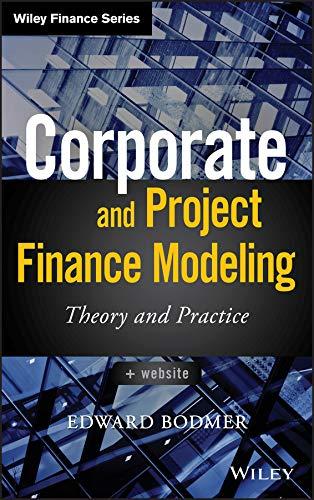Answered step by step
Verified Expert Solution
Question
1 Approved Answer
3:18 Sell 51% Tutorial 2 - Read-only Sign in to edit and save changes to this file. FINANCIAL MANAGEMENT 2 TUTORIAL 2 Gbagadi Incorporation wants


3:18 Sell 51% Tutorial 2 - Read-only Sign in to edit and save changes to this file. FINANCIAL MANAGEMENT 2 TUTORIAL 2 Gbagadi Incorporation wants to ascertain its overall cost of capital. The company is in the 30% tax bracket, the financial manager has gathered the following information: Common stock: the company common stock is currently selling for $15 per share. Expects to pay dividend of $0.50 per share in the next year. The company dividend has been growing at an annual rate of 8% and this rate is expected to continue in the future. The company is expected to have $500,000 of retained earnings available in the coming year, once these retained earnings are exhausted, the firm will issue new common stock. The new common stock will be underpriced by 0.50 per share, and the floatation costs are $0.30 per share. Preferred stock: The company issue 10% of preferred stock at its $100per share value. The cost of issuing and selling the preferred stock is expected to be $2 per share. Long term Debt; The Company can raise debt issuing $1,000 par value, 12% coupon interest rate, 10-year bonds. It has to sell the bond at a discount of $20 per bond and must pay the floatation costs of $15 per bond. Required: a. Calculate the Individual cost of each source of financing. b. What is the company's WACC using the weights shown in the table given below; Source of Capital Weight Common stock 55% Preferred Stock 15% Long term debt 30% Total c. What is the company's WACC if the weights in the table have been adjusted as follows: Source of Capital Weight Common stock 35% Preferred Stock 15% Long term debt 50% Total 100 3:18 Sell 51% Tutorial 2 - Read-only Sign in to edit and save changes to this file. FINANCIAL MANAGEMENT 2 TUTORIAL 2 Gbagadi Incorporation wants to ascertain its overall cost of capital. The company is in the 30% tax bracket, the financial manager has gathered the following information: Common stock: the company common stock is currently selling for $15 per share. Expects to pay dividend of $0.50 per share in the next year. The company dividend has been growing at an annual rate of 8% and this rate is expected to continue in the future. The company is expected to have $500,000 of retained earnings available in the coming year, once these retained earnings are exhausted, the firm will issue new common stock. The new common stock will be underpriced by 0.50 per share, and the floatation costs are $0.30 per share. Preferred stock: The company issue 10% of preferred stock at its $100per share value. The cost of issuing and selling the preferred stock is expected to be $2 per share. Long term Debt; The Company can raise debt issuing $1,000 par value, 12% coupon interest rate, 10-year bonds. It has to sell the bond at a discount of $20 per bond and must pay the floatation costs of $15 per bond. Required: a. Calculate the Individual cost of each source of financing. b. What is the company's WACC using the weights shown in the table given below; Source of Capital Weight Common stock 55% Preferred Stock 15% Long term debt 30% Total c. What is the company's WACC if the weights in the table have been adjusted as follows: Source of Capital Weight Common stock 35% Preferred Stock 15% Long term debt 50% Total 100
Step by Step Solution
There are 3 Steps involved in it
Step: 1

Get Instant Access to Expert-Tailored Solutions
See step-by-step solutions with expert insights and AI powered tools for academic success
Step: 2

Step: 3

Ace Your Homework with AI
Get the answers you need in no time with our AI-driven, step-by-step assistance
Get Started


